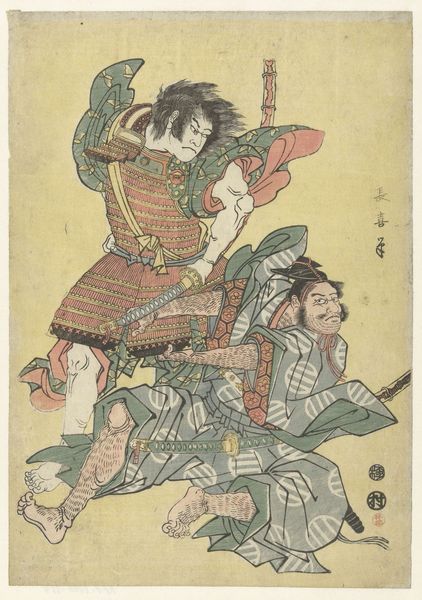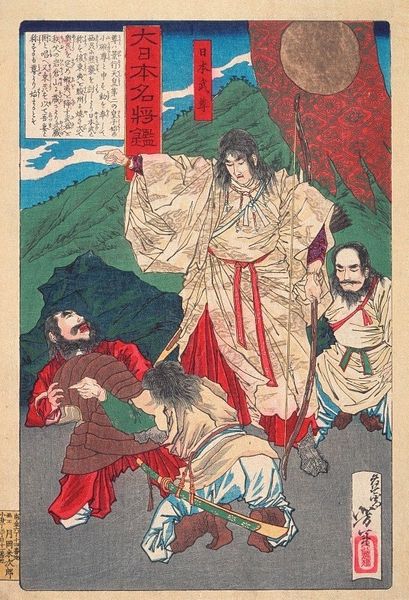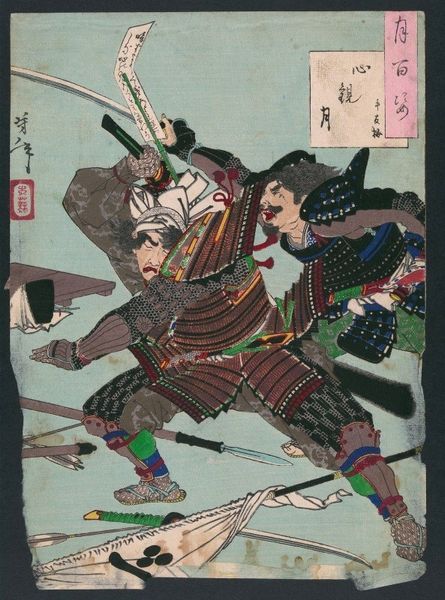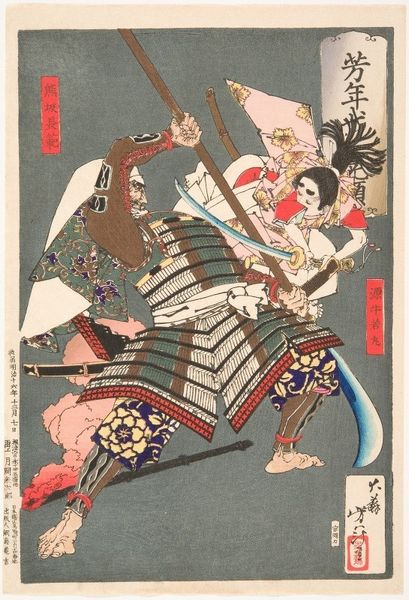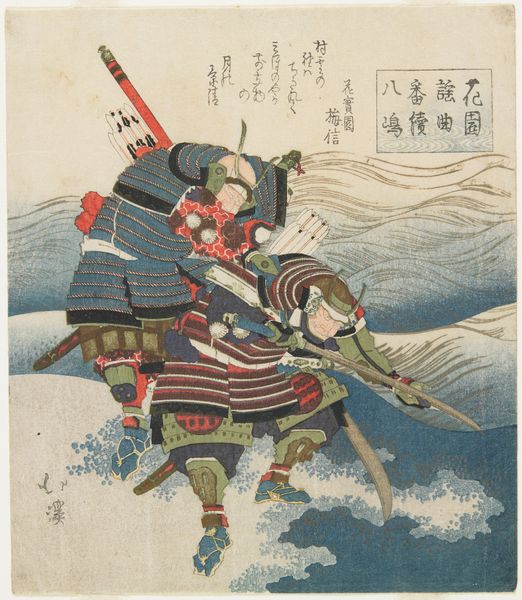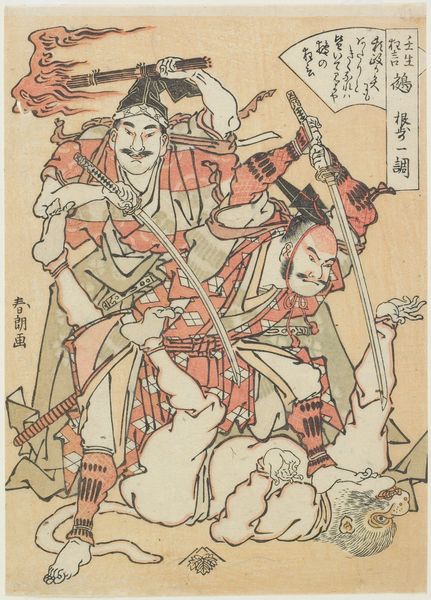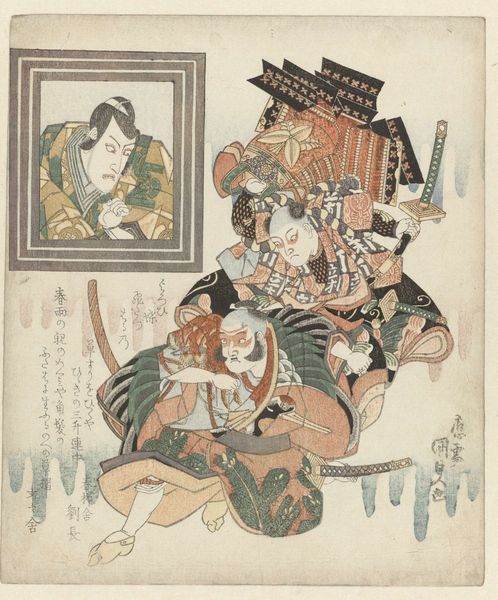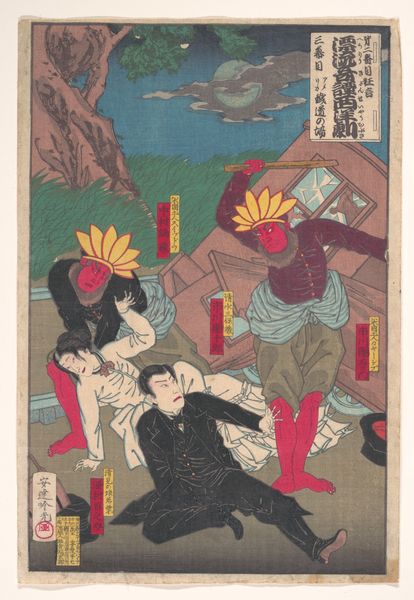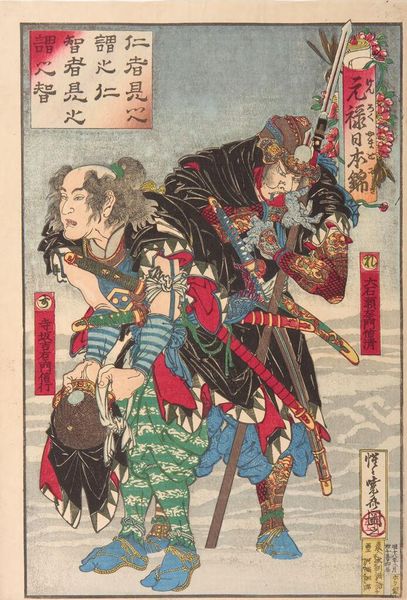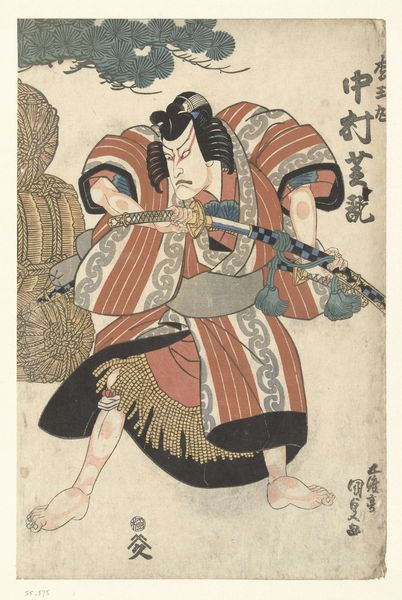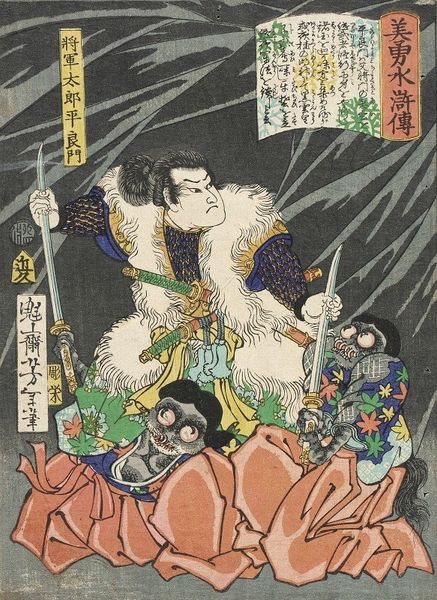
Minamoto Tametomo, from the series The Unofficial History of Japan (Nihon gaishi no uchi) Possibly 1884
0:00
0:00
Dimensions: vertical Åban: H. 37.6 cm x W. 25.3 cm (14 13/16 x 9 15/16 in.)
Copyright: CC0 1.0
Editor: So, this is Kobayashi Kiyochika's "Minamoto Tametomo" from "The Unofficial History of Japan." I'm struck by the contrast between the bold figure of Tametomo and the somewhat passive figures around him. What do you see in this piece? Curator: Kiyochika uses historical narratives to reflect on Meiji-era Japan. Consider how Tametomo, a symbol of rebellion, might resonate with anxieties about rapid modernization and the loss of traditional values. How does this image challenge or reinforce established power structures? Editor: That's interesting! I hadn't thought about it as a commentary on modernization. So, the choice of subject and the way he’s portrayed isn’t just historical, but also political? Curator: Exactly! Kiyochika often used his art to critique or question the dominant narratives of his time. The romanticized, almost defiant, portrayal of Tametomo suggests a subtle resistance to the new order. Are there other aspects that you find compelling? Editor: The fish at the bottom of the image. What do you make of them? Curator: The fish could symbolize sustenance, but also potentially a loss of purity, or even a sacrifice made to the changing times. It’s worth pondering the weight of tradition when societies quickly change. Editor: I didn’t appreciate the depth of this piece, thanks for offering that historical lens. Curator: It’s important to remember that art exists in a constant dialogue with the world around it, and we should embrace that dialogue.
Comments
No comments
Be the first to comment and join the conversation on the ultimate creative platform.
